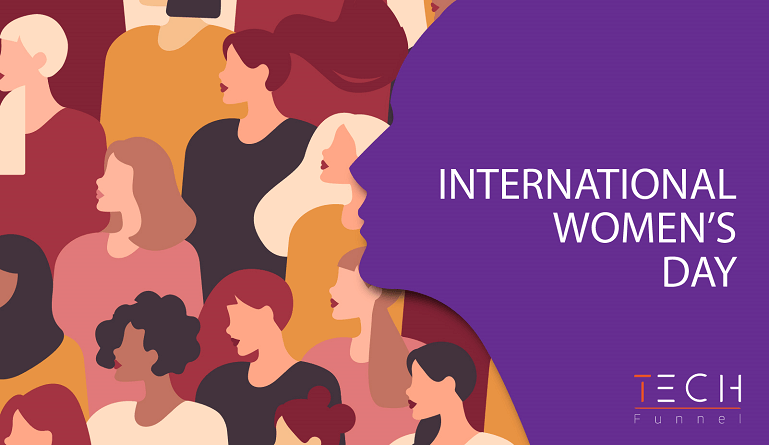On average, women in the workplace tend to receive a less favorable hand of cards than their male counterparts. They are tasked with more admin (and unpaid) duties, such as scheduling meetings, and may be overlooked for promotions and hiring due to internalized bias. For International Women’s Day, we discuss how to address some of these issues through the intervention of HR – particularly by using HR tech.
Using HR Tech to Find and Address the Gender Pay Gap
No industry, state, or nation has achieved complete gender wage equality as of yet. As reported in the Global Inequality Report 2022, 68.1% of the worldwide gender gap has been addressed. With the present pace of advancement, achieving complete equality will take 132 years. This is a tiny four-year improvement compared to the projection for 2021. (136 years to parity) – and HR tech can bring it down further.
1. Start with pay transparency
Despite being the law in certain places, discussing remuneration packages or salaries with coworkers is continues to be considered taboo in several businesses.
With digital compensation technologies, HR departments may achieve pay transparency and promote open communication. Utilizing predictive analysis, one can generate enterprise-wide reports outlining industry compensation standards and cost-of-living ratios. This will provide the data required for male and female employees to comprehend your payment strategy.
You can also add this information in job descriptions to promote a culture of inclusivity and attract more women candidates.
2. Personalize the benefits
The current workforce is made up of five generations, and workers have diverse remuneration package preferences. Predictive analytics with AI can offer organizations vital information that actually matches the expectations and values of specific employees. For example, women may value employment flexibility more than males.
Contrarily, workers in the early stages of their careers may believe that fitness subsidies or free lunches better meet their demands. Technologies based on artificial intelligence may assist HR departments in identifying female workers who might require a boost in the form of incentives, matching them with the rewards that offer the highest individual value.
This will also help in improving retention rates among women, breaking the broken rung and eventually bringing the pay gap.
(Also Read: 5 Ways to Structure Your Human Resources Department)
3. Remove bias when making pay decisions
While it is difficult to determine if managers are really making discriminatory judgments, HR tech can remove the risks of bias. HR professionals can gain insights into just how compensation is allocated throughout a company and how it connects with race, gender, and other aspects via the use of advanced compensation analytics.
A digital performance management system can also be of use, providing managers with quantifiable data on performance, regardless of gender. It also aids in clear goal setting for women employees that cannot be obfuscated by bias.
How HR Tech Can Help Listen to the Voice of Women Employees
Voice of employee (VoE) tools are essential for gauging employee sentiment and engagement. Specifically, the same rules apply to female workers.
For instance, employee experience management solutions may help you monitor employee perspectives and attitudes before and after a significant event (such as an annual review), allowing you to evaluate the overall resonance of your message. You may also segment the input to determine how underrepresented groups react to it.
Some individuals may not feel confident or comfortable sharing their views in an open discussion. HR Technology tools may assist with this by:
- Allowing executives to ask workers questions via questionnaires
- Enabling individuals to respond truthfully without fear of retaliation
HR departments should evaluate their own initiatives to enhance diversity. Assess the diversity or homogeneity of the team by designing employee engagement questionnaires and analyzing data. Due to the fact that team members carry their own unique perspectives to the workplace, a team with much less diversity may develop a questionnaire and evaluate the data, encumbered with biases that may not adequately reflect all workers. These factors must be taken into consideration when collecting data on the sentiment and enthusiasm of female workers using HR technologies.
Support Career Progression Among Women Employees with HR Tech
Succession strategy and managerial training are of the utmost significance and may expedite the progression of women in the workplace. It also contributes to the recruitment and retention of the best talent, particularly among female workers.
With an open and inclusive succession strategy in place, the advancement and identification of future leaders will be formalized, standardized, and determined by experience, as opposed to being influenced by gender prejudices. But to achieve this, you need data-driven success planning tools that combat the effect of human bias. You also need an affirmative action plan to use the tool effectively and proactively.
In order to help women in the workplace, education and training are also key determinants. A comprehensive learning management system (LMS) may provide clarity when workers are perplexed about the career advancement options available to them or when the company is uncertain about the learning pathway perfectly suited for women in the workplace. LMS systems may offer the foundation for an individual’s learning based on their specific objectives and serve as a barometer for their progress, in line with individual aspirations and organizational goals.
Data from the LMS can feed into performance management systems and career pathing or succession planning tools.
Women’s Health and How to Support it
Endometriosis is a widespread, often debilitating, but often-ignored gynecological condition, according to Endometriosis UK. It affects 1 in 10 women and even those designated female at childbirth from adolescence to menopause, and its effects may last a lifetime.
60% of 16- to 24-year-old women and 56% of 25- to 34-year-old women are apprehensive about addressing their illness with their employers if they take time off owing to unpleasant periods and recurrent pelvic distress.
An additional study from the Social Research Centre at University College London demonstrates how menopause causes women to lose out on promotions and wage increases. When some women reach the top of their careers, disorders such as hot flashes, sleeplessness, anxiousness, and heart palpitations disrupt or even end their careers.
That’s where HR technology may help. Absence management software may assist managers in identifying behavioral trends, such as someone taking a few sick days per month. A person with endometriosis may need to take time off around their menstruation but may feel uncomfortable discussing it with their manager/boss beforehand.
Since the system can be set to prompt return-to-work interviews at any and all times, it will never fail to do so. This is an opportunity for women to discuss their absence in a safe environment. A dialogue with an employee might help reveal the fundamental reasons for absence and offer female workers a chance to discuss a stigmatized health condition.
If management is aware of any problems, they may offer assistance and guide workers to resources and policies that may help them better manage their condition. Leave and absence management software, combined with analytics and automated alerts, can increase awareness of women’s health issues and their possible impact.
Hire More Women
AI is disrupting basically every aspect of human resources, including the current hiring practices. AI-based recruiting might help us eliminate errors and bias in the hiring and onboarding practices by using these new technologies. When screening applicants, one of the greatest benefits of AI is that it may be programmed to disregard variables like gender and socioeconomic status.
Men may subconsciously consider a female candidate’s gender while evaluating her, even when they have no intent of being prejudiced. AI may be taught to disregard irrelevant factors like a candidate’s gender, cover letter style, etc., and instead focus on experience, skills, and promise.
Conclusion
According to research from 2022, we are witnessing a “Great Breakup.” Unprecedented numbers of female employees are leaving their companies because they want more from their jobs. Women in leadership are switching jobs at an extraordinary pace and at a greater rate than men in management. This might have major consequences for companies across the board unless you take the right steps. HR tech can help bridge the gender gap in the workplace and create equitable, productive work environments for all.







